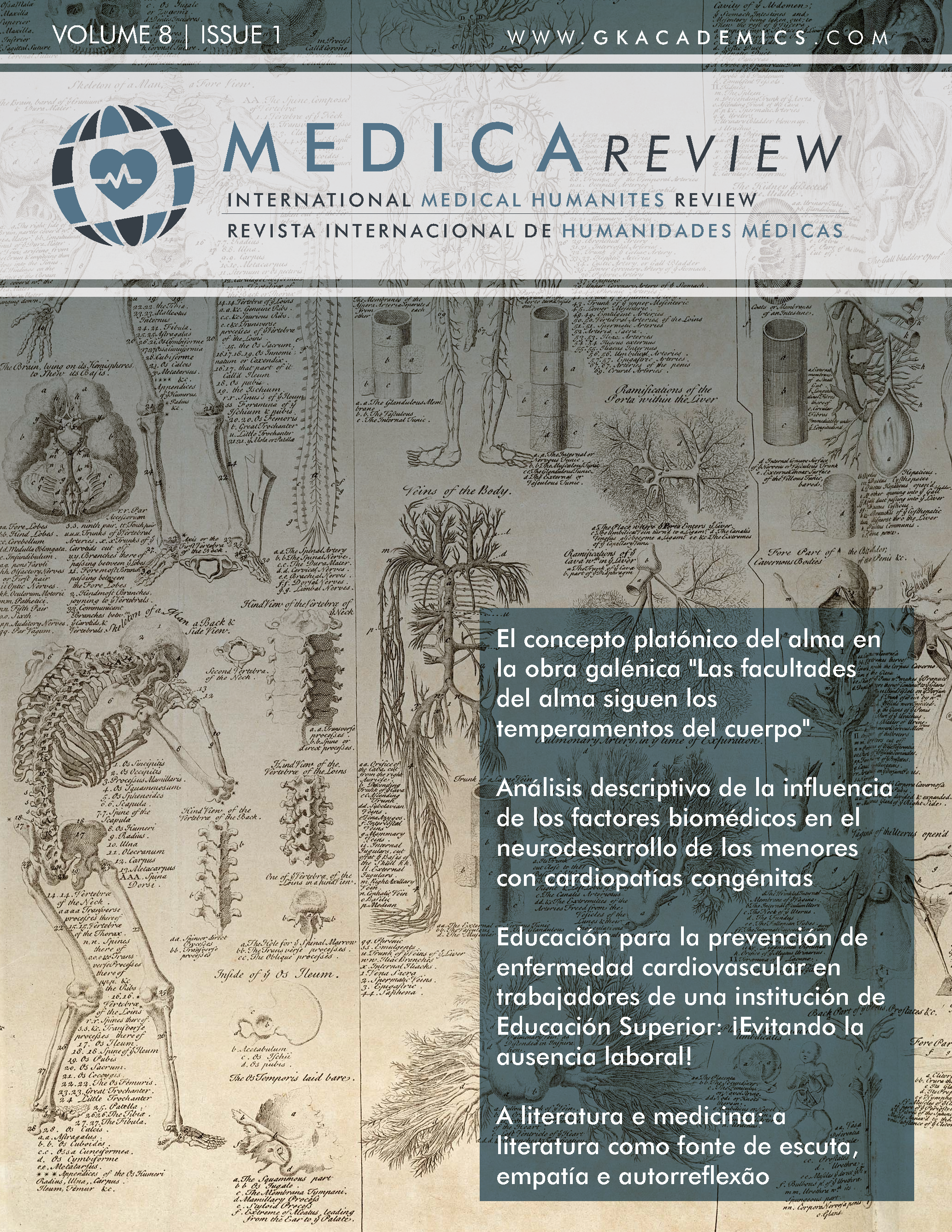Education for Prevention of Cardiovascular Diseases in a Higher Education Institution Workers: ¡Avoiding absence from work!
DOI:
https://doi.org/10.37467/gka-revmedica.v8.1896Keywords:
Risk Factors, Cardiovascular Disease, Promotion, PreventionAbstract
Cardiovascular diseases (CVD) are the cause of many deaths worldwide and the most paradoxical issue is that most of them can be prevented by acting on behavioural risk factors such as sedentary lifestyle, excess weight, inadequate diets, cigarette consumption and alcoholic beverages. Cardiovascular risk must be detected early to intervene it first and prevent it becomes a diagnosed disease. Promotion and prevention of healthy lifestyle habits prevent suffering and improve the quality of people’s life, even more in active working individuals who must interact in a social environment daily.
Global Statistics ℹ️
|
108
Views
|
32
Downloads
|
|
140
Total
|
|
References
Abalo, J. (2016). Enfermedades crónicas no transmisibles: Un abordaje desde los factores psicosociales. Salud & Sociedad, 7(2).
Bourges H., (1988). Costumbres, prácticas y hábitos alimentarios: deseables e indeseables. Arch latinoam nutric, 38(3), pp. 766-779.
Casas S.B., Klijn T.P. (2006). Promoción de la salud y su entorno laboral saludable. Rev. Latino-am Enfermagem, 14(1), pp. 136-41.
Coitinho D., Monteiro C., Popkin B. (2002). What Brazil is doing to promote healthy diets and active lifestyles. Public health nutrition, 5(1), pp. 263-267.
Diaz, L. K., Casas, D., Ortega, F. (2013). Hábitos alimentarios y nivel de actividad física de los estudiantes de tercero a séptimo grado de dos colegios de Santiago de Cali: Colegio Luis Fernando Caicedo y Colegio Colombo Británico. Universidad del Valle.
Escobar, M. C. et al. (2000). Mitos sobre la prevención y el control de las enfermedades no transmisibles en América Latina. Salud Pública de México, 42(1), pp. 56-64.
Fundación Bengoa. (2008). Guías de alimentación para Venezuela. Disponible en: https://www.fundacionbengoa.org/publicaciones/guias_alimentacion_venezuela.asp
Ley 1355 de 2009
Meda R, De Santos F, Palomera A, Del Toro R. (2012). Educar para la salud en Educación Superior: Tendencias y retos. RevEducCienc Salud, 9(2). pp. 86-94.
Ministerios del Interior, de Educación y Cultura y de Sanidad y Consumo. España. (2009). Nutrición Saludable y Prevención de los Trastornos Alimentarios.
OMS. (2008). Prevención de las enfermedades no transmisibles en el lugar de trabajo a través del régimen alimentario y la actividad física Foro Económico Mundial.
OMS. (2010). Informe sobre la situación mundial de las enfermedades.
OMS. (2015). Enfermedades no transmisibles.
OMS. (2015). Enfermedades no transmisibles [cited 2016 marzo 04 de 2016]. Available from: http://www.who.int/mediacentre/factsheets/fs355/es/.
OMS. (2015). Obesidad y Sobrepeso [cited 2016 marzo 03 de 2016]. Nota descriptiva No. 311]. Available from: http://www.who.int/mediacentre/factsheets/fs311/es/
Romieu, I. (2011). Diet and breast cancer. Salud pública de México, 53(5), pp. 430-439.
Varraso R. et al. (2015). Alternate Healthy Eating Index 2010 and risk of chronic obstructive pulmonary disease among US women and men: prospective study, vol. 350.
Zhang Ya-Ping et al. (2014). CFTR as a Novel Target and Mechanism for High-Fructose Diet and Salt-Induced Hypertension. Arteriosclerosis, Thrombosis, and Vascular Biology, vol 34.
Downloads
Published
How to Cite
Issue
Section
License
Those authors who publish in this journal accept the following terms:
- Authors will keep the moral right of the work and they will transfer the commercial rights.
- After 1 year from publication, the work shall thereafter be open access online on our website, but will retain copyright.
- In the event that the authors wish to assign an Creative Commons (CC) license, they may request it by writing to administracion@edulab.es









